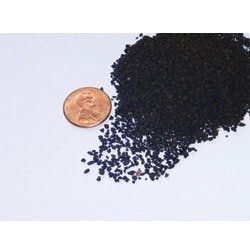Plating Facility Cleans Up its Storm Water
Diamond Chrome Plating’s Howell, Mich., plating facility was causing elevated levels of chromium, cadmium and zinc in storm water. Preliminary testing led the company to try a new approach using a low-cost ion exchange material made from peat.
American Peat Technology uses a low-temperature carbonization process to convert peat into a granular, hardened ion exchange material called APTsorb. These granules have a high internal surface area, maintain their structure when wet and can be crushed to any size, making them easily adaptable to existing treatment system technologies. Because the product is crushed to a uniform size, flow rates are consistent and controllable, with estimated conductivities in excess of 1 cm/sec.
Treatment of storm water at the facility began in July 2008. APTsorb was effective in removing total chromium and cadmium, with average removal efficiencies of 98.7% and 93.2%, respectively. With the exception of a few values during startup, the system was effective at meeting permit conditions. Zinc removal was slightly lower, but still averaged 85%. The material treated more than 3 million gal before the capacity of the peat for chromium was exceeded and concentrations increased in the effluent. The media was replaced in August 2011. Toxicity characteristic leaching procedure tests leached essentially no chromium (<0.01 mg/L) and only small amounts of cadmium (0.1 mg/L), and the spent material easily qualified as non-hazardous.
The treatment system at the facility operated for three years with no flow problems and little maintenance. The parts for the complete system cost around $85,000 and were installed by Diamond Chrome staff. The APTsorb for this system cost about $15,000. When the removal capacity of the material had been exhausted, the material was easily removed from the treatment tanks with a vacuum truck and taken to a sanitary landfill.
Download: Here


